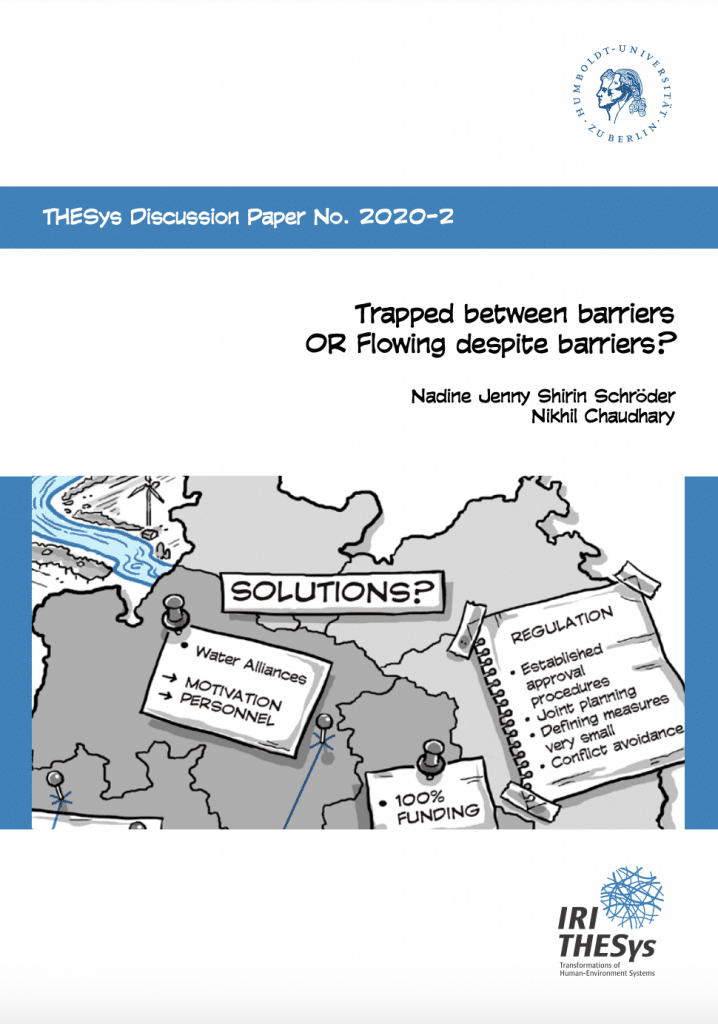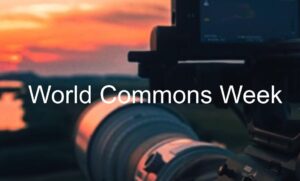In times of Covid-19, we are clearly going though a lot of adjustments. While I hope those who are going through more fundamental adjustments will be able to go through these times well, some of these adjustments also mean that we may sit down even more often to read research papers to engage in traditional scientific exchange of ideas through the written word. However, under time constraints and with the interest in fostering exchange between science and practice, other formats than traditional papers might be helpful in opening a lively discussion.
Here I want to share my experience in creating a science comic. I developed a science comic discussion paper titled “Trapped between barriers OR Flowing despite barriers?”. The comic visualizes the existing local barriers for the implementation of the European Union Water Framework Directive (WFD) – the motivation of WFD addressees, barriers related to financial, personnel and land resources, and institutional interplay. The comic shows the findings by illustrating an interview situation in Saxony-Anhalt. However, the findings refer to the overall situation in six German states: Hesse, Thuringia, North Rhine Westphalia, Saxony, Lower Saxony and Saxony-Anhalt.

After a workshop at IRI THESys in January 2019, I was interested in trying to create a scientific comic based on my PhD research. What started as an experiment with an open-end, became an enriching experience. I worked together with the artist Nikhil Chaudhary, who I met multiple, to be precise nine, times to discuss the scientific background of the story, develop the storyline, and gather ideas for the visualization. During these meetings we used rapid prototyping for visualizations. While I drafted the texts, Nikhil drafted the drawings. At the very end, Nikhil created the final artwork. The final steps towards the publication of the comic paper resembled the usual process of paper production.
The final drawing steps coincided with my plans to participate in a forum organized by nature conservationists on the implementation of the EU Water Framework Directive. The idea of creating a German version of the comic to be presented as a poster to practitioners taking part in the forum was quickly realized. The comic fully unfolded its potential as a communication instrument. People could quickly read and grasp the content of my research, which provided a good basis for spontaneous discussions.
Creating this format transformed also my thinking regarding several of my findings. It highlighted the emotional aspects of the topic. In a traditional paper, these aspects would be shadowed by charts and tables, probably leading to a different weighting of the same facts. Yet, this visualization process may be an additional method for exploring data and gathering additional insights.
In any case, a science comic, whether being a learning process, an analytical tool or a communication instrument, is a worthwhile format for science!
I hope, I sparkled your curiosity. The Coronavirus shutdown delayed the official publication by Humboldt University. However, you can already find the English and the German version of the comic, as well as the slides on the creation process presented at an IRI THESys lunch talk in January 2020, below and on my profile.
I would like to thank IRI THESys at Humboldt University, which provided the funding for the artistic work, and IASC Europe for providing a platform to share the outcomes of our work. And a big thanks to Nikhil, for this enriching cooperation!
Nadine Schröder
More information:
Schröder, N. J. S. and Chaudhary, N. (2020). Trapped between barriers OR Flowing despite barriers? THESys Discussion Paper No. 2020-2. Humboldt-Universität zu Berlin, Berlin, Germany. Pp. 1-13.
Schröder, N. J. S. and Chaudhary, N. (2020). WRRL-Umsetzungshürden: Unpassierbar oder durchgängig für Maßnahmenträger? THESys Discussion Paper No. 2020-1. Humboldt-Universität zu Berlin, Berlin, Germany. S. 1-13.
Schröder, N. J. S. and Chaudhary, N. (2020). Creating a science comic on local barriers for WFD implementation in Germany. Lunch talk presentation at IRI THESys, January 17, Humboldt University.
Update: Now the discussion paper has been officially published by THESys HU here.








